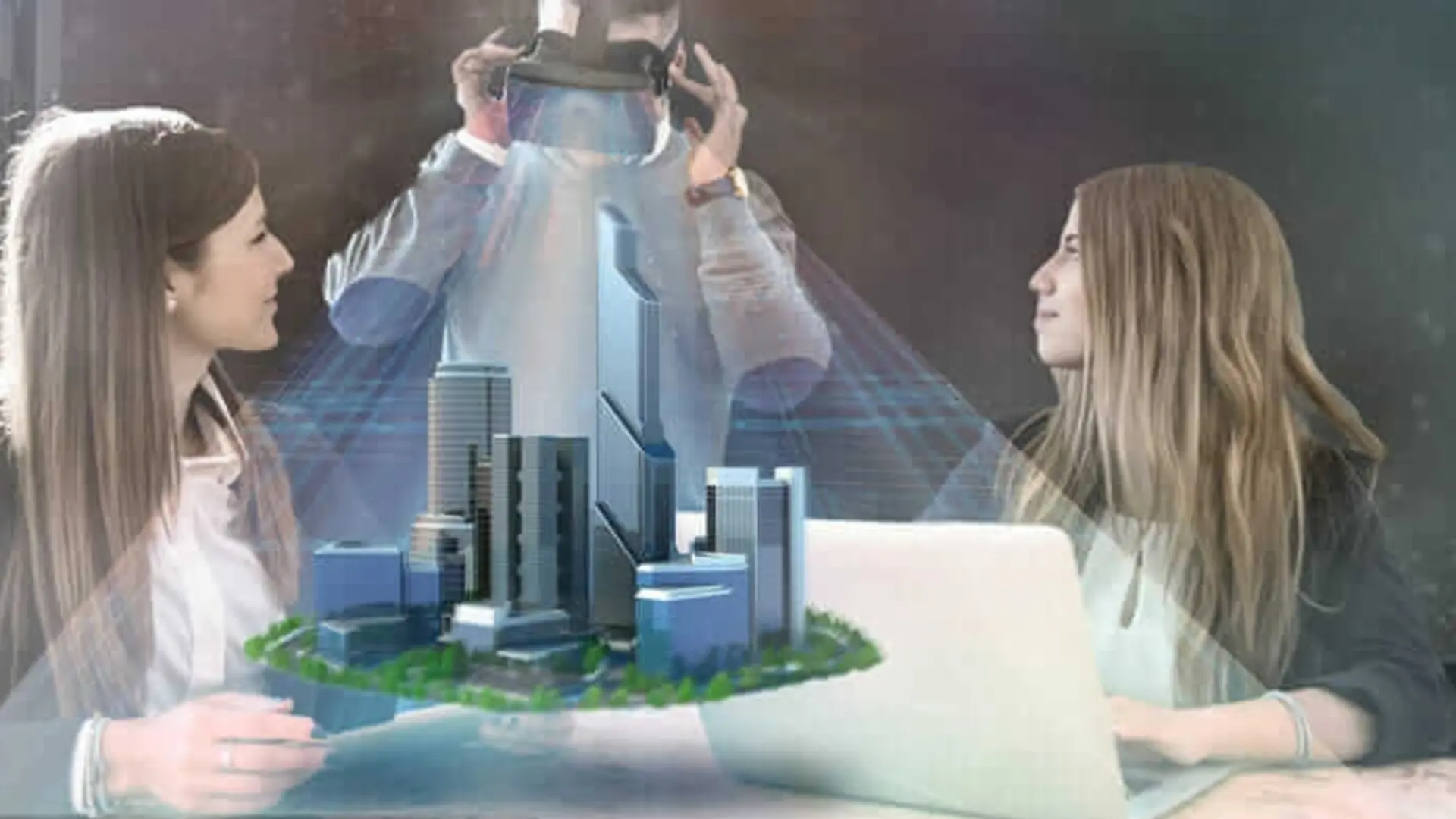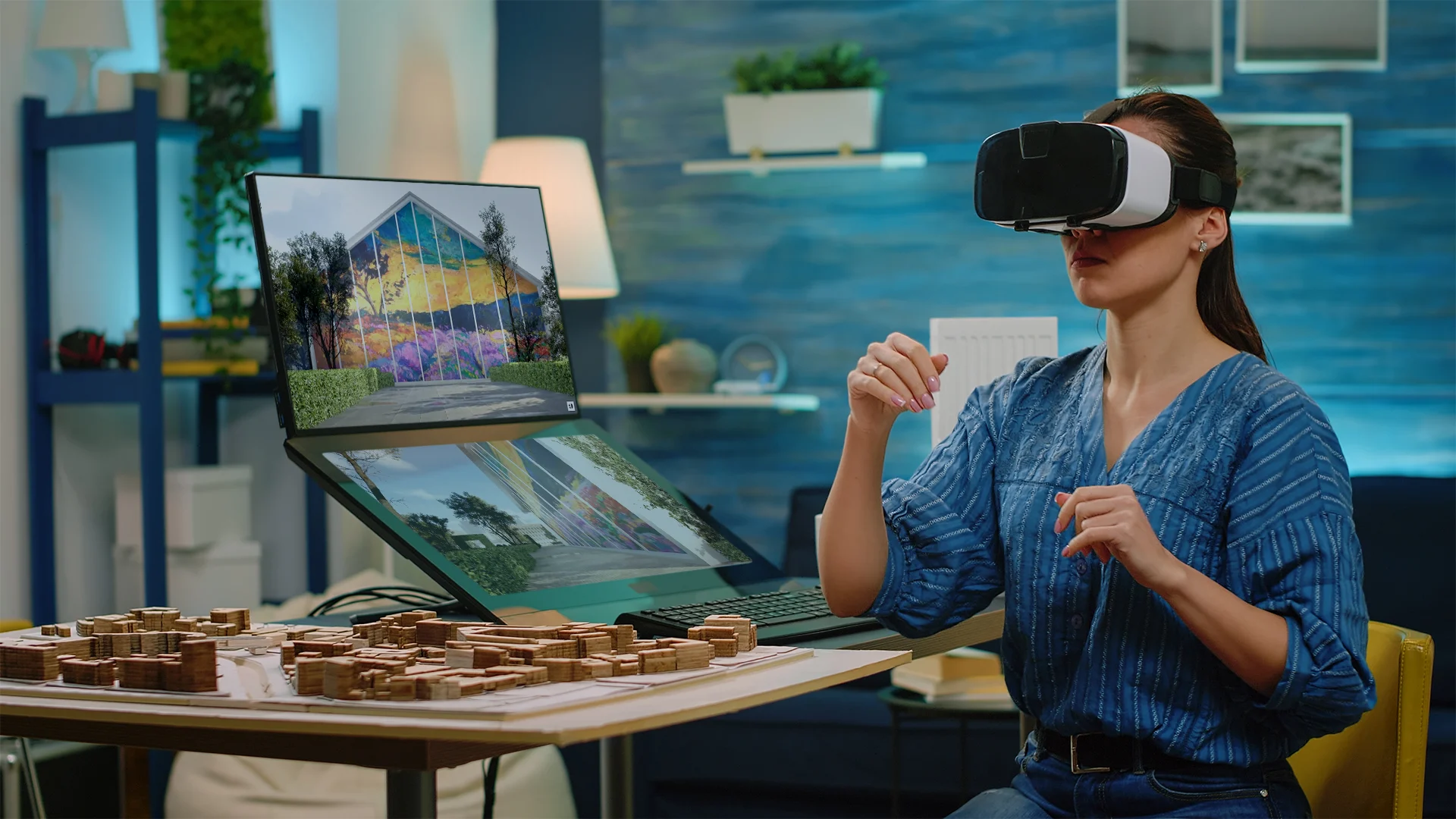Virtual reality and its application in architecture
Virtual Reality (VR) has emerged as a powerful tool in architecture, offering architects, designers, and clients immersive experiences that enhance design visualization, collaboration, and decision-making. Here’s a comprehensive exploration of VR’s impact on architectural practice and its diverse applications.
1. Immersive Design Visualization
Virtual Walkthroughs:
- Architectural Exploration: Navigating virtual environments to experience spatial relationships, scale, and design details in real-time.
- Material and Lighting Simulation: Visualizing different materials, textures, and lighting conditions to evaluate aesthetic and functional aspects of design concepts.
2. Design Iteration and Exploration
Iterative Design:
- Real-Time Feedback: Making instant design modifications and exploring alternative solutions based on stakeholder feedback during virtual design reviews.
- Scenario Planning: Testing design scenarios and spatial configurations to optimize functional layouts and user experience.
3. Enhancing Collaboration and Communication
Stakeholder Engagement:
- Virtual Meetings: Conducting virtual design charrettes and collaborative sessions with clients, consultants, and project teams in a shared immersive environment.
- Remote Collaboration: Facilitating real-time interaction and decision-making among geographically dispersed stakeholders through VR-enabled platforms.

4. Client Presentations and Visualization
Client Engagement:
- Interactive Presentations: Presenting architectural designs in a compelling and interactive manner, allowing clients to explore and experience proposed spaces.
- Design Validation: Addressing client concerns and preferences by visualizing design options and modifications in VR before construction begins.
5. Safety and Risk Mitigation
Construction Planning:
- Safety Simulations: Conducting virtual safety audits and simulations to identify potential hazards and optimize construction logistics.
- Conflict Resolution: Resolving design conflicts and coordination issues early in the project lifecycle to minimize errors and delays during construction.
6. Education and Training
Architectural Education:
- Virtual Studios: Providing students with hands-on experience in architectural design and urban planning through VR-based studio courses.
- Professional Development: Offering immersive training programs for architects and designers to learn new software tools, design methodologies, and project management skills.
7. Sustainable Design and Environmental Analysis
Performance Simulation:
- Energy Modeling: Analyzing building performance metrics, daylighting, and thermal comfort through VR simulations to optimize energy efficiency.
- Biophilic Design Integration: Assessing the impact of natural elements and biophilic design principles on occupant well-being and environmental sustainability.
8. Accessibility and Inclusivity
Universal Design:
- Accessibility Assessments: Conducting virtual accessibility audits and user experience simulations to ensure compliance with ADA guidelines and enhance inclusivity.
- User-Centered Design: Incorporating feedback from diverse user groups to create environments that are accessible and accommodating for all individuals.
9. Future Innovations in VR Technology
Emerging Trends:
- Augmented Reality (AR) Integration: Combining VR with AR technologies to overlay digital information onto physical spaces for enhanced visualization and real-world interaction.
- AI and Machine Learning: Leveraging AI-driven algorithms to generate interactive VR environments and predictive design simulations based on user preferences and behavior.
10. Ethical and Legal Considerations
Data Privacy and Security:
- Confidentiality: Protecting sensitive project data and intellectual property rights associated with VR-generated design models and simulations.
- Ethical Use: Adhering to ethical guidelines and industry standards for responsible VR deployment in architectural practice and client engagements.
Conclusion
Virtual Reality is revolutionizing architectural design by offering unprecedented capabilities in design visualization, collaboration, and client engagement. By embracing VR technologies, architects can leverage immersive experiences to innovate, streamline workflows, and create sustainable, inclusive, and resilient built environments. As VR continues to evolve, its integration into architectural practice promises to redefine design processes, enhance decision-making, and shape the future of urban development and architectural innovation.



